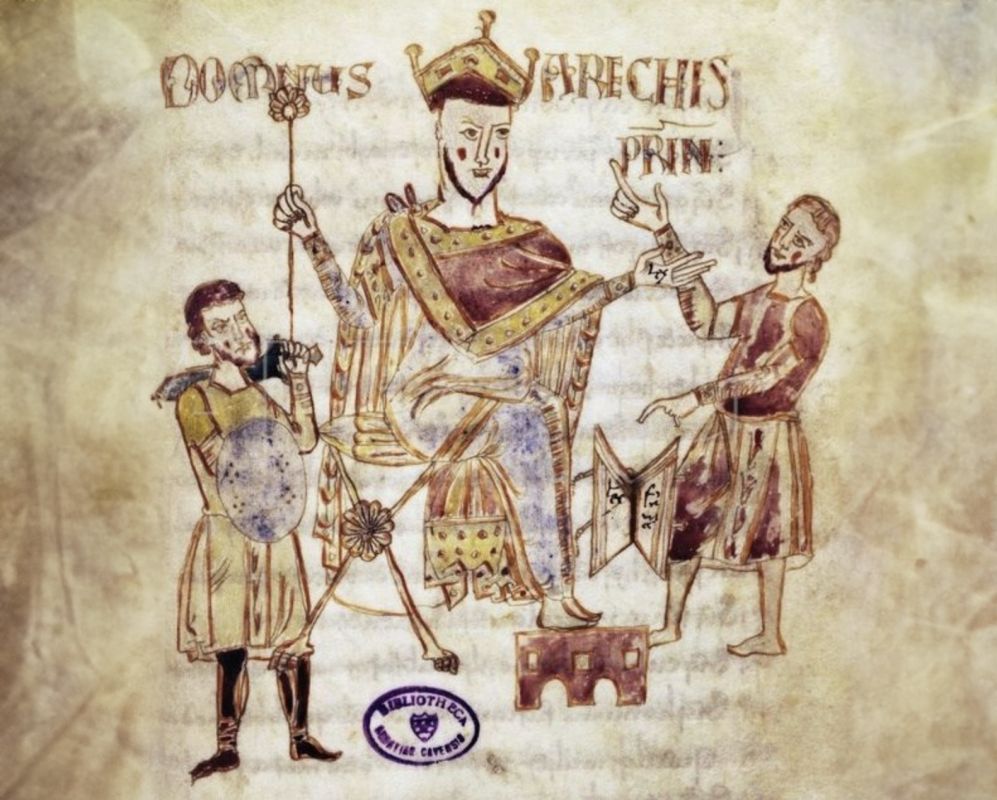It is certainly not frequent that a city can boast of having been the capital three times in its history, in a period of thirteen centuries.
But Salerno can do it, which due to its position has found itself on several occasions playing a leading role in the events of Southern Italy and the entire Peninsula. Starting from the 8th century AD, in the middle of the Middle Ages, to end eighty years ago in a crucial phase of the Second World War and the fate of the whole of Italy.
The Lombard capital
774 was a fundamental year in the history of the Lombards in Italy. In the north, where it had been the center of their dominion in Italy for over two centuries, the defeat suffered by King Desiderius by Charlemagne, king of the Franks, marked the fall of the Kingdom. The only dominion left to the Lombards was Langobardia minor with the duchy of Benevento, led by Arechi II who, after the upheavals in the north, took the title of princeps and moved the seat of the new autonomous state to Salerno. The city then experienced a great urban development, evidenced in particular by the castle with its structures to defend the city and the palace of San Pietro a corte. A phase of well-being and growth that continued into the following century, when the Salerno Medical School was born and began to establish itself, whose value was recognized well outside the borders of the principality.
The history of the principality of Salerno and, therefore, of the Lombards in Italy came to an end in 1077, when the city fell into Norman hands, marking the beginning of another era with new rulers who also came from the north.
The Norman capital
 The protagonist of the change was Roberto d'Altavilla, known as Guiscardo, who had come to Italy in 1047, intending to conquer a dominion in the south, where some of his half-brothers had already settled in Puglia. From one of them he obtained a small fiefdom in Calabria and from there he began his rise, battle after battle, conquest after conquest, founding the first Norman castles. The alliance with the Pope was decisive in the institutionalization of Norman power between Puglia and Calabria and Roberto became the recognized leader of the new rulers, who were progressively replacing the previous Lombard lords. And Roberto's second wife was Lombard, Sichelgaita of Salerno, sister of Prince Gisulfo II, lord of the city on the Irno river.
The protagonist of the change was Roberto d'Altavilla, known as Guiscardo, who had come to Italy in 1047, intending to conquer a dominion in the south, where some of his half-brothers had already settled in Puglia. From one of them he obtained a small fiefdom in Calabria and from there he began his rise, battle after battle, conquest after conquest, founding the first Norman castles. The alliance with the Pope was decisive in the institutionalization of Norman power between Puglia and Calabria and Roberto became the recognized leader of the new rulers, who were progressively replacing the previous Lombard lords. And Roberto's second wife was Lombard, Sichelgaita of Salerno, sister of Prince Gisulfo II, lord of the city on the Irno river.
Roberto married her, after repudiating his first wife in 1059, the same year as the Treaty and Concordat of Melfi, thanks to which he obtained recognition from the Pope as Duke of Calabria, Puglia and Sicily. More lands to conquer and battles to fight. Roberto's decisive move to definitively take over the Lombard dominions came in 1076, when he decided to conquer the Principality of Salerno and laid siege to the city. His brother-in-law Gisulfo resisted for a year in the castle of Arechi, then, also due to the intervention of Sichelgaita, he abandoned the field, entrusting himself to the protection of Pope Gregory VII and leaving the city to the Norman. In 1077 Roberto moved the capital of the Duchy of Puglia and Calabria from Melfi to Salerno.
The Norman capital experienced another period of great economic, commercial and urban growth. The new palace in Castel Terracena and the Cathedral were then built. And the School experienced great impetus also thanks to Sichelgaita, herself an expert in medicine, who governed as regent between 1085 and 1088.
Salerno remained the capital for fifty years, until 1127 when Roger II took power. It remained, however, a thriving city of primary importance both in Italy and in the Mediterranean.
Capital of Italy
In the decisive year for the fate of the Second World War and the Italian state, Salerno, the first mainland Italian city to be liberated by the allied forces, was the seat of government and residence of the king for five months from 11 February to 15 July. It was precisely on 11 February 1944 that the Italian government, chaired by Pietro Badoglio, had once again assumed all powers over the part of the national territory liberated by the Germans. Therefore, Salerno was a de facto capital, although Rome (in those first months of the year still occupied by Nazi-German troops) had never ceased to be so from a constitutional point of view.
The Presidency of the Council and various ministries were allocated to Palazzo Natella and the other ministries were located in various historic buildings in the city centre, with the exception of the Ministry of Industry and Commerce which was located outside the city, in Vietri sul Mare. Also in the territory of Vietri, in the hamlet of Raito, the king and his family settled in Villa Guariglia. In the government in office on 11 February, the first Badoglio government, there were also two ministers from Salerno: Raffaele Guariglia for Foreign Affairs and Giovanni Cuomo for National Education. It was in those months that the latter minister managed to open a Magisterium in Palazzo Pinto, thus starting the reactivation in Salerno of the university abolished after the Unification of Italy.
On 27 April the second Badoglio government of national unity was formed, implementing the so-called Svolta di Salerno *Salerno Turning Point”, i.e. the agreement concluded between all the member parties of the National Liberation Committee, which also provided for the entry of the Italian Communist Party into the executive. That government remained in charge until June 18. Another national unity government followed, presided over by Ivanoe Bonomi, who left Salerno on 15 July to move to the constitutional capital, Rome, liberated on 4 June.



Comments powered by CComment